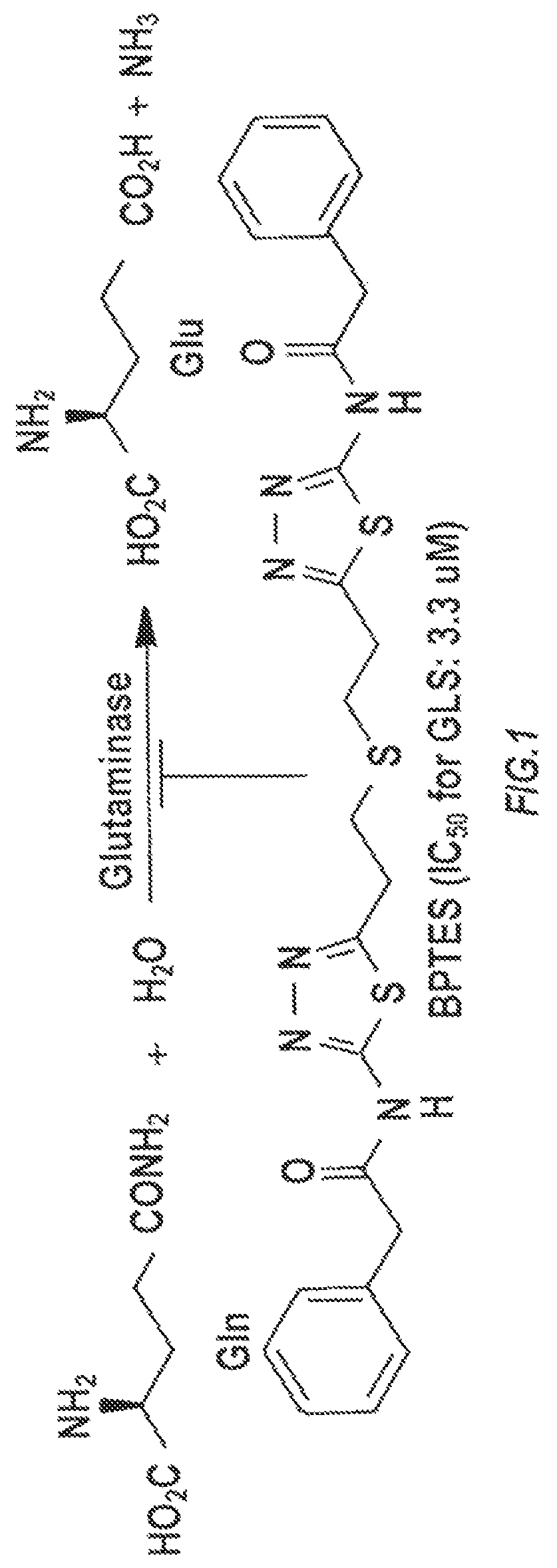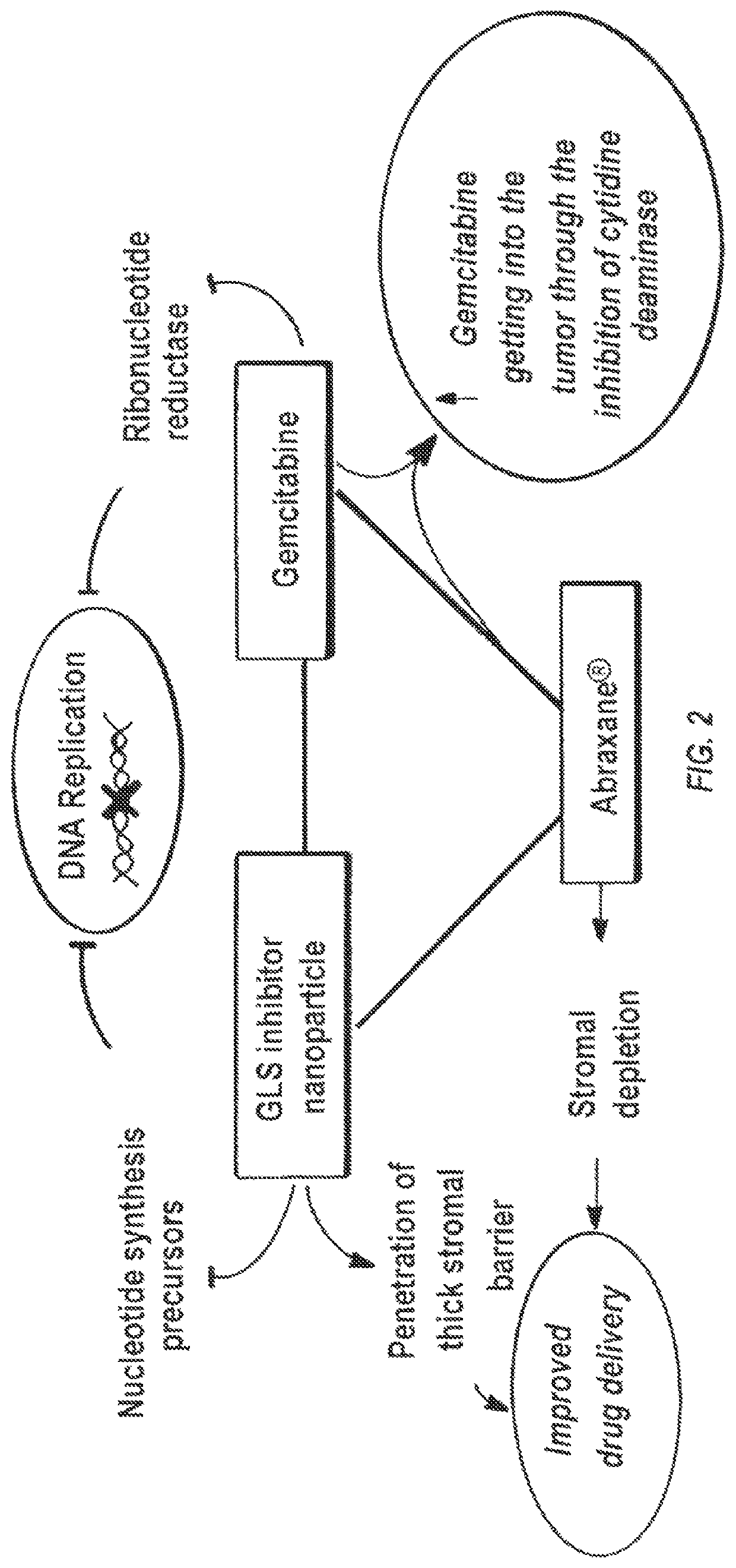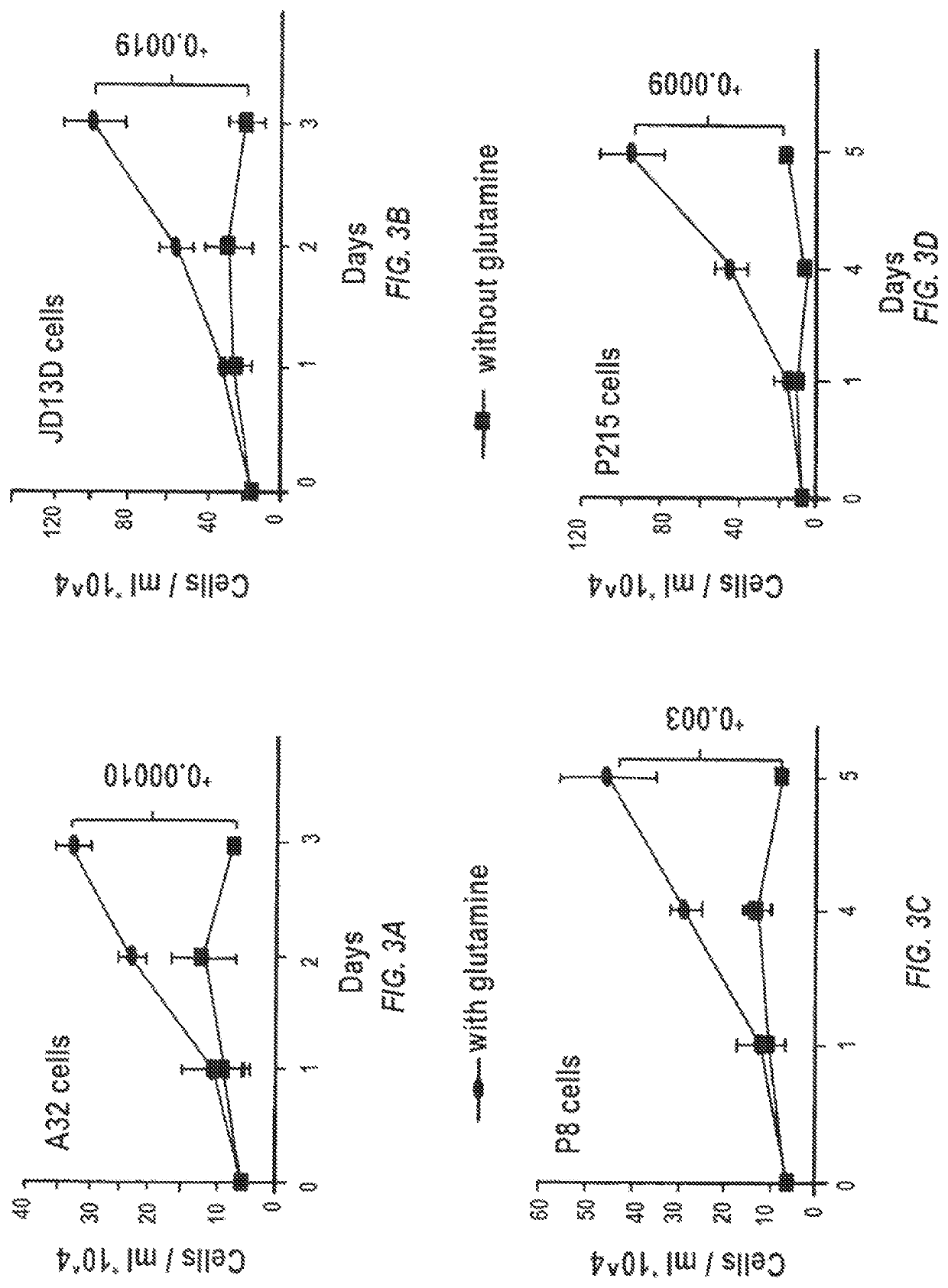Glutaminase inhibitor discovery and nanoparticle-enhanced delivery for cancer therapy
a glutamine inhibitor and nanoparticle technology, applied in the direction of microcapsules, organic chemistry, drug compositions, etc., can solve the problems of reducing the efficacy and therapeutic index, new approaches are sorely needed, and the growth rate of glutamine-addicted pancreatic cancer is delayed in vitro and in vivo, so as to achieve similar lipophilicity, enhance interaction, and improve potency
- Summary
- Abstract
- Description
- Claims
- Application Information
AI Technical Summary
Benefits of technology
Problems solved by technology
Method used
Image
Examples
example 1
Testing of Glutamine Deprivation on Pancreatic Cancer Cells
Materials and Methods
[0138]Dr. Le at the Division of Gastrointestinal and Liver Pathology, John Hopkins University, has a large collection of pancreatic cancer cell lines and xenografted pancreatic tumor specimens resected from patient samples at the time of surgery. These patients had not undergone chemotherapy or radiation therapy before surgery. Grafted tumors are subsequently transplanted from mouse to mouse and maintained as a live PancXenoBank and have been shown to retain their in vivo growth characteristics.
[0139]KRAS mutations render over 90% of pancreatic cancer cells addicted to glutamine, thereby conferring sensitivity to glutamine deprivation and GLS inhibition. Both of the pancreatic cancer models used herein closely recapitulate the clinical, pathologic, genetic and molecular aspects of human PDACs: the patient-derived orthotopic xenograft model uses patient tumors with KRAS mutations, and the KrasLSL.G12D / +; ...
example 2
Screening for GLS Inhibitors; Design of New GLS Inhibitors
Materials and Methods
[0142]A high throughput screening (HTS) assay and together with NCATS screened over 350,000 compounds in attempt to identify novel GLS inhibitor structures. No tractable hit compounds were identified, which led to alternative approaches for circumventing the problem associated with BPTES, including taking advantage of its lipophilic nature by encapsulating the molecule into nanoparticles for sustained drug delivery. The significance of this approach is that the compounds share BPTES' antiproliferative effects without suffering from its poor solubility and metabolic stability.
[0143]The main objective was then to identify GLS inhibitors with improved potency while retaining a similar degree of lipophilicity with BPTES to ensure compatibility with nanoparticle formulation. Two distinct lines of medicinal chemistry efforts were used for design and synthesis of new GLS inhibitors.
Results
a) Focused Structural O...
example 3
Nanoencapsulation of GLS Inhibitors
Materials and Methods
[0156]Nanoparticles up to ˜114 nm in diameter are capable of rapid penetration in rodent and human solid tumor tissue, but only if the nanoparticles are coated with an extremely dense PEG corona. Studies were conducted to determine if nanoparticles with or without dense PEG coatings remain immobilized at the injection site in the tumor following administration regardless of nanoparticle size (they are located along the needle tract only). The densely PEG-coated nanoparticles can be used to encapsulate many different drugs with high drug loadings, including BPTES.
[0157]BPTES and its analogs are lipophilic, thus enabling the encapsulation of these drugs at high levels into biodegradable nanoparticles composed of block copolymers of poly(lactic-co-glycolic acid) and poly(ethylene glycol), or PLGA-PEG, using emulsification to prepare biodegradable PLGA-PEG nanoparticles with both dense PEG coatings and high drug loading, and sustai...
PUM
| Property | Measurement | Unit |
|---|---|---|
| diameter | aaaaa | aaaaa |
| diameter | aaaaa | aaaaa |
| size | aaaaa | aaaaa |
Abstract
Description
Claims
Application Information
 Login to View More
Login to View More - R&D
- Intellectual Property
- Life Sciences
- Materials
- Tech Scout
- Unparalleled Data Quality
- Higher Quality Content
- 60% Fewer Hallucinations
Browse by: Latest US Patents, China's latest patents, Technical Efficacy Thesaurus, Application Domain, Technology Topic, Popular Technical Reports.
© 2025 PatSnap. All rights reserved.Legal|Privacy policy|Modern Slavery Act Transparency Statement|Sitemap|About US| Contact US: help@patsnap.com



